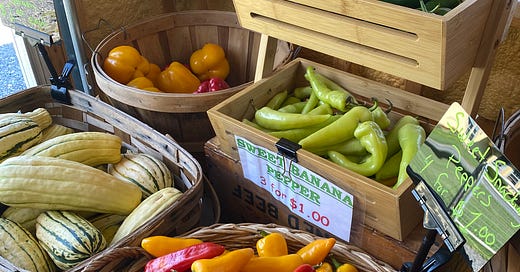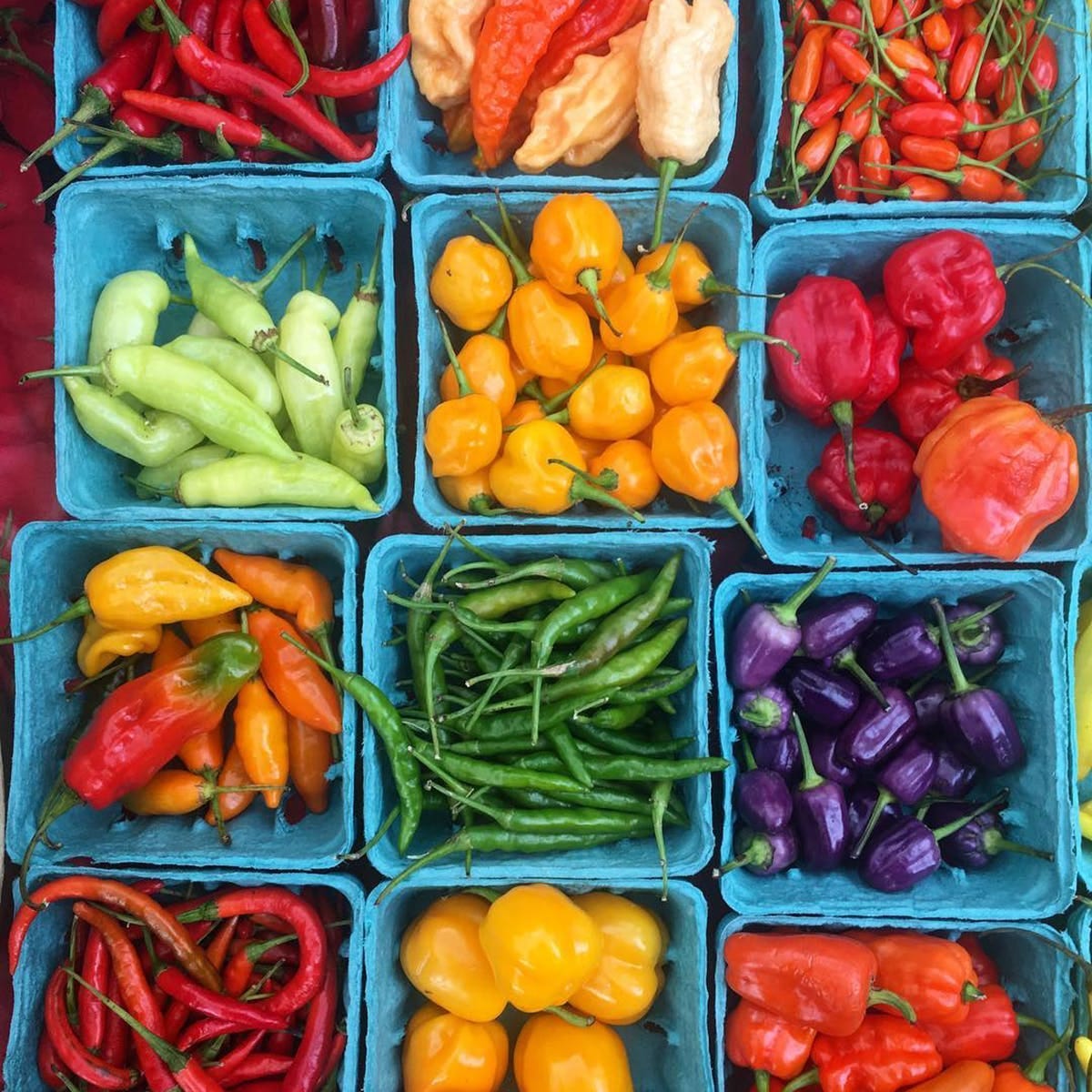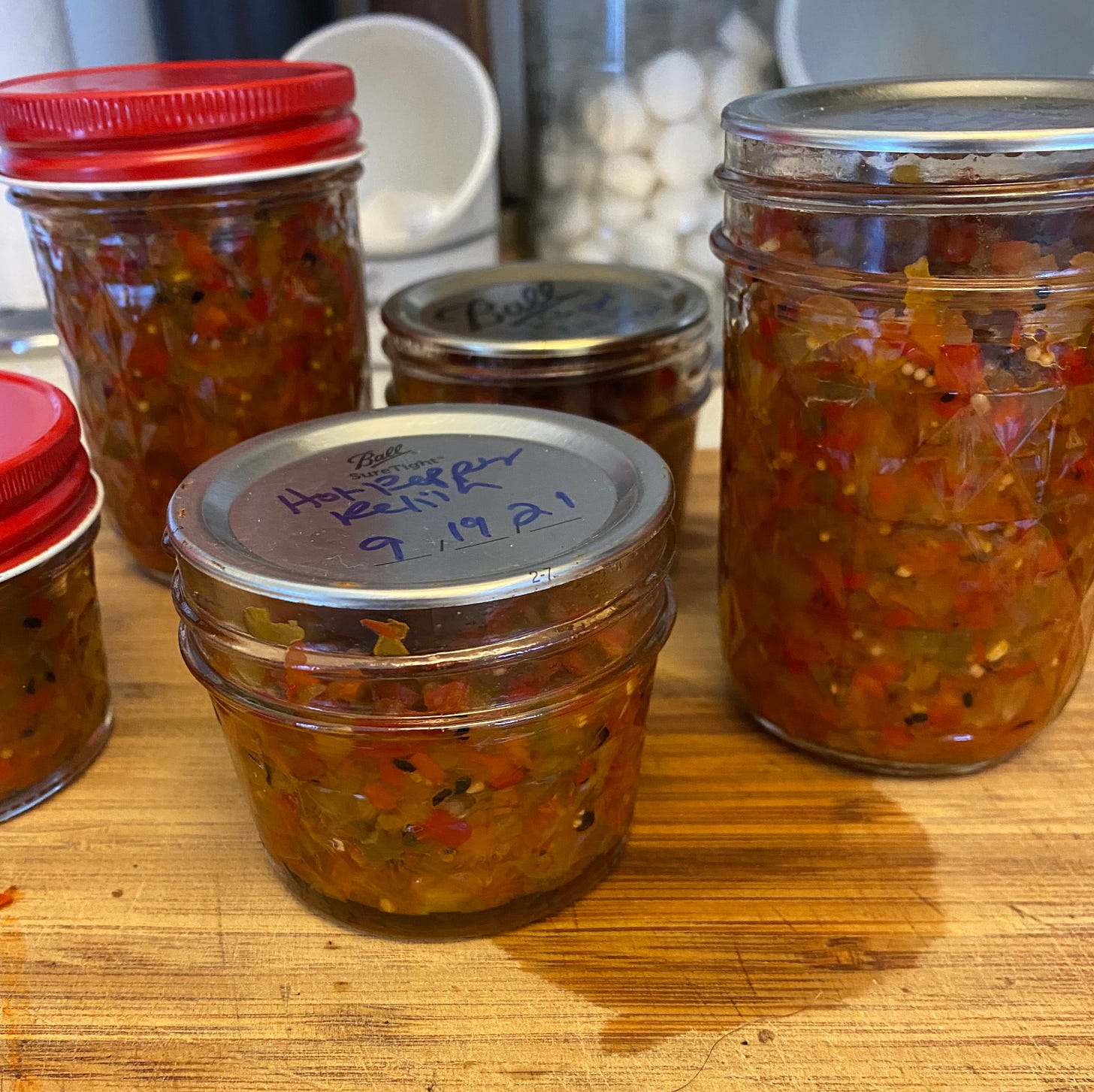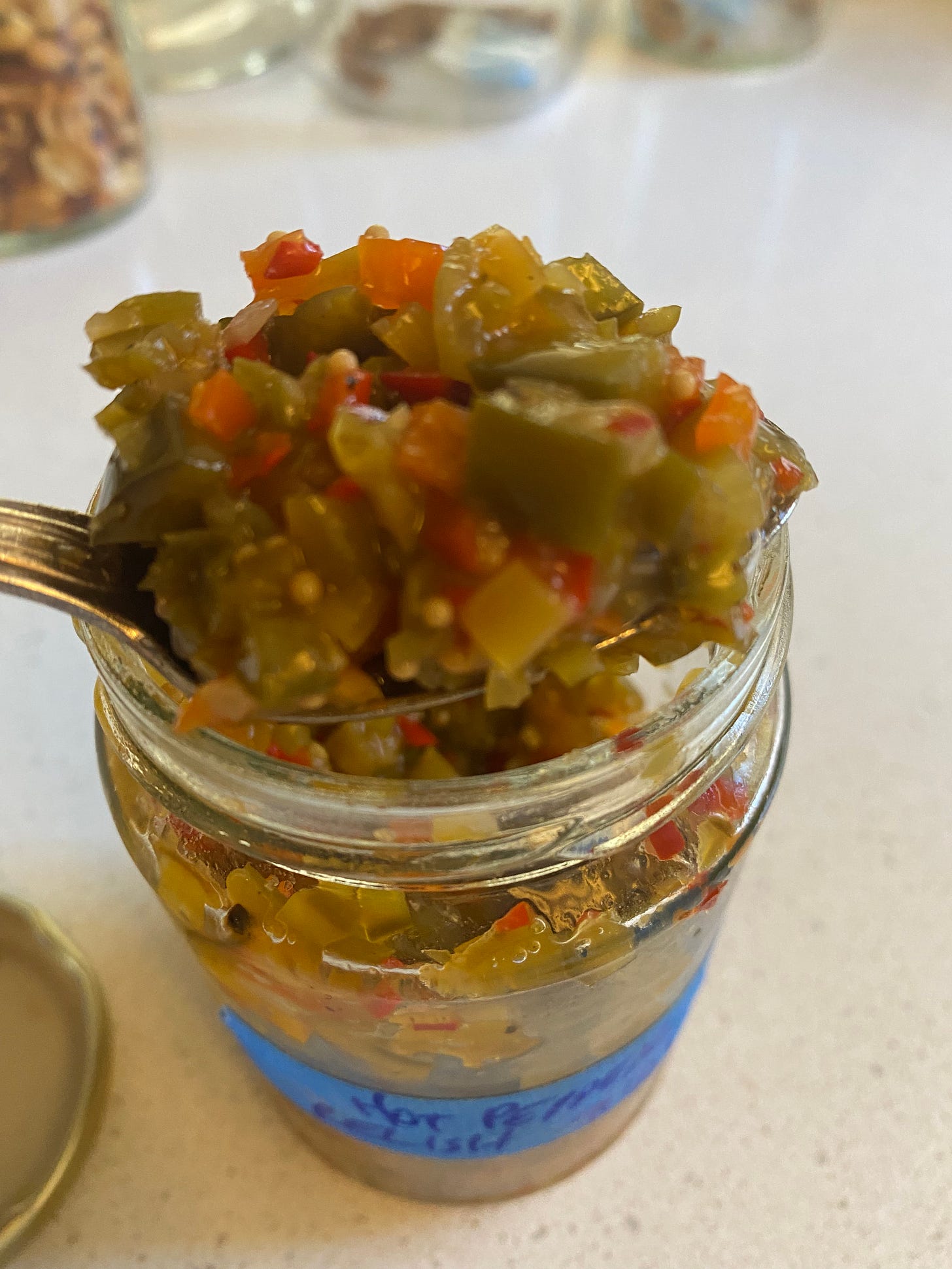Hot Take: Pepper Relish
Here's what to do with all those beautiful peppers you can't stop buying.
We present Issue #18, a lucky number in the Jewish tradition, on this first day of autumn. The season has definitely changed—the days are shorter, the nights are cooler, apples and squash are everywhere, and I just bit into a lousy local nectarine. Keep cooking. Thank you for signing up and/or subscribing, and for sharing this newsletter with family and friends. I’d love to hear from you about what you’d like to see in future issues, whether specific dishes or categories, techniques, information about ingredients, shopping advice, more of one thing, less of another. Click the button below to provide feedback.
This time of year the farm stands and farmers markets in my world are full of peppers in a rainbow of colors and a range of spiciness. I find them irresistible, but I don’t always know what to do with them. After sautéing a few, stuffing a few, stewing some, roasting some more, I’m usually left with a crisper drawer full of peppers that I need to use up. I’ve made lacto-fermented chili sauces, pickled jalapeno’s and cherry peppers, pipérade, you name it. This year we planted one Jimmy Nardello seedling on our terrace and it has given us dozens of peppers. And still I buy more. They are too beautiful to pass by.
When I was a kid, green bell peppers and long Italian “frying peppers” were all we ever saw. The bells “repeated” on my mother, but she loved them anyway, so she sliced them into iceberg lettuce salads or stuffed them with a mixture of ground beef and rice for something “fancy.” Frying peppers were reserved for a kind of sauté we called “casserole,” or occasionally Italian sausages fried with plenty of onions. On the occasion we’d venture to an Italian grocery store we might see red bell peppers—which I was surprised to learn years later were just green peppers left to ripen—but we didn’t eat them much.
The advent of hydroponically grown peppers from Holland changed the color scheme of our bell pepper selection, but didn’t do much for flavor. For the most part, I still find these imported hothouse peppers water logged and tasteless. I once tried making the famous yellow pepper soup from Cibreo restaurant in Florence, passato di peperoni giallo, using yellow peppers from Holland. Like most Italian food, with a just a few ingredients, the soup relies on the flavor of the peppers, so pure and profound in the bowl at Cibreo that it’s kind of mind blowing, especially when you learn the recipe has only a handful of ingredients. Mine was insipid. It wasn’t until a few years later when my Italian friend Seba made a similar soup at his home in Greve-in-Chianti that I saw why firsthand. To make his soup, Seba had purchased a wooden flat of six giant, misshapen, yellow peppers with green streaks, each larger than my head. They were stunning. And the second he cut into one, the room filled with the distinct grassy-sweet aroma of bell pepper. I could relate a similar story of frustration while trying to recreate the iconic red pepper jelly from a famous butcher up the road from Greve in Panzano, but you can imagine how it goes (or doesn’t).
Anyway, recently I’ve been faced with a lot of beautiful, colorful, flavorful local peppers in my kitchen and for some reason I got it in my head that I wanted to make a spicy, sweet, acidic pepper relish with them, something I could serve with cheese or eggs, spread on a sandwich, or stir into a potato salad. After a few tries I settled on this recipe, below.
The few times I’ve made it this season I’ve used a wide variety of peppers. They’ve included red and green, long, hot Korean peppers, shishitos, light green Roumanian peppers, yellow and orange “snacking peppers,” Italian frying peppers, poblanos, some thai chillis, those Jimmy Nardellos we grew, some jalapeno’s, and yes, some red and yellow bells (locally grown). I like this relish to have a kick to balance the sweet and acid, but it’s primarily the complex flavor of peppers I’m after, not a three-alarm fire.
You can make this relish and keep it in a jar in the fridge for several months, or you can preserve it in Mason jars using a boiling water bath (process 5 minutes for ½ pint jars). The canned relish loses a little of its bright rainbow coloring, but none of its flavor.
RECIPE: Spicy-Sweet Pepper Relish
(Makes about 4 cups)
1 ½ to 2 pounds assorted peppers, including some hot ones, some sweet ones, some large ones, some small ones; the more variety in color and flavor, the better
1 small white onion or two small shallots, finely chopped
¾ cup white wine or (unseasoned) rice vinegar
½ cup sugar
2 teaspoons yellow mustard seeds
1 teaspoon coriander seeds
1 teaspoon nigella (onion) seeds
Kosher salt and freshly ground black pepper
For peppers, it really helps to work with a sharp knife. Slice off the tops of the peppers, cut them lengthwise in half, and remove the seeds and ribs. Finely chop the flesh (work with them skin side up on the cutting board) and place in a large, nonreactive saucepan. Continue until all are chopped to the same size. You should have between 3 and 4 cups when you are finished. Add the onion or shallot, vinegar, sugar, and seeds, along with a generous pinch of salt and a few grinds of black pepper.
Set the mixture over medium-high heat and bring to a boil, stirring frequently to dissolve the sugar and to evenly distribute the peppers. Once boiling, reduce the heat to low and continue cooking, uncovered, stirring often, until most of the liquid has been evaporated and the peppers are fully cooked.
If you plan to process the relish, while hot, spoon into sterilized jars, wipe, cover, and boil for 5 minutes to seal. Otherwise, once cooled, transfer the relish into a large jar or container and store in the fridge.






